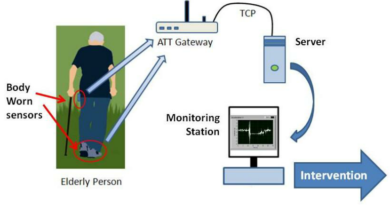The Ultimate Learning Path to Become a Data Scientist and Master Machine Learning in 2019
Learning paths are immensely popular among our readers and with good reason! Learning paths take away the pain and confusion from the learning process. For those who don’t know what a learning path is – we take the pain of going through all the resources available on data science, machine learning and Artificial Intelligence, select the best ones, and arrange them in a logical sequence for you to follow.
If this sounds like a lot of work – it is. And it is done with the purpose of eliminating that huge amount of work you would otherwise have to do. We understand that when you are starting out in data science, the sheer amount of resources can be overwhelming. And hence we created learning paths. And our learning paths were an instant success with our community.
If learning paths were useful in 2018, this year they would be the most helpful tool for a person trying to become a data scientist. Why? Because the amount of content and information out there has increased multi-folds. And so has the confusion and the amount of knowledge expected out of a data scientist.
Access the complete learning path to become a data scientist in 2019 here. You will need to register yourself on our training portal – this will enable you to keep track of what you have covered.
Summary – Learning Path to become a Data Scientist in 2019
Broadly, the learning path to become a data scientist can be divided into the following steps:
- Getting Started: The biggest step of them all – beginning your data science journey. This stage is all about understanding what data science is and what a data scientist role entails. Additionally, this is where you should pick up the programming language and tool of your choice (our recommendation is Python). This will enable you to code through all that you learn in the coming months
- Learning Basic Maths and Statistics: What are the core concepts a data scientist must absolutely know? That would be statistics and mathematics. Where learning a tool will help you perform quick calculations and generate results, you can’t truly become a data scientist until you have a solid grasp on statistical methods (probability, descriptive and inferential stats) and mathematical fields (linear algebra to be precise). That’s why we emphasize on these two fields in this year’s learning path
- Learning Machine Learning concepts and applying them: This is where things start to hear up – you’re reading this article because you’ve been intrigued by what machine learning can do. And once you’re done with the above points (by March start if you follow the learning path), you will start learning the basics of machine learning. But this isn’t just limited to theoretical concepts. We firmly believe in learning by doing, hence we have provided some awesome projects so you can experience what a data scientist does!
- Some more applications of Machine Learning: Once you have a good grasp on these basic techniques, we move along in April to more advanced topics, like ensemble learning, random forest, boosting algorithms, and time series methods. But ML isn’t limited to just the algorithms, you need to know nifty tricks to improve your model, right? That’s where validation strategies and feature engineering will play a role. We also encourage you to keep your focus on industry applications, and have hence included a recommendation engine project in the learning path
- Introduction to Deep Learning: Now you know these machine learning concepts, what comes next? Deep learning of course! It’s becoming an essential part of any data scientist’s CV these days. July should see your data scientist path lean towards understanding neural networks and getting the hang of Keras
- Various deep learning architectures like RNN, CNN: Follow that up with a deep dive into advanced neural network frameworks, namely recurrent neural networks and convolutional neural networks. These are fairly heavy concepts, hence we recommend spending a few weeks on understanding them from scratch
- Computer Vision Applications: Computer vision is one of the hottest fields right now and hence we have focused a lot on this domain. We feel every data scientist should absolutely have this on their resume since this is where a lot of the jobs in the future will come up. We have included a really cool project to give you a practical understanding of how a computer vision model works
- Natural Language Processing (NLP): No data scientist learning path is fully complete without first going over NLP. You should focus on learning the basics at the very least, including text preprocessing and text classification. If you’re feeling adventurous, you can explore how deep learning works in NLP but that’s not a mandatory requirement
We have broken down all these steps month on month – so if you start following the learning path, you know exactly what you need to follow and what you need to cover every month starting today.
You can access the full learning path here and register yourself to start your journey today. Our training portal enables you to track your progress after each section thus helping you to stay on track throughout the year.
Here is an image laying out what should you do month on month to become a data scientist by the end of 2019. If you put in all the efforts as mentioned in the learning path – you will be well placed to get into a data scientist role before the end of the year.
We have one more gift to make your new year truly special. Join Analytics Vidhya’s CEO and Founder Kunal Jain on January 10th for an exclusive webinar where he will elaborate on how to get the most out of this learning path. He will discuss the roadmap to become a data scientist in 2019. Get your questions answered and your doubts clarified by one of the eminent personalities in this field!
We have done all the hard work to make sure you have all you need on 1st January to become a data scientist this year. Now, it is your turn. As always, if you have any questions – do let us know. See you more often on Analytics Vidhya in 2019!
Resource URL:-
https://qbotica.com/doqumentai/
https://fred-e.net/intelligent-document-processing-software-can-boost-your-business/

Steven Matthews is a blogger who has been on the internet for over 6 years. He has had articles published in publications such as The Huffington Post and The Washington Post. He writes about News, Health, Business, Marketing, and technology. His work can be found at www.ipcounselcongress.com.




